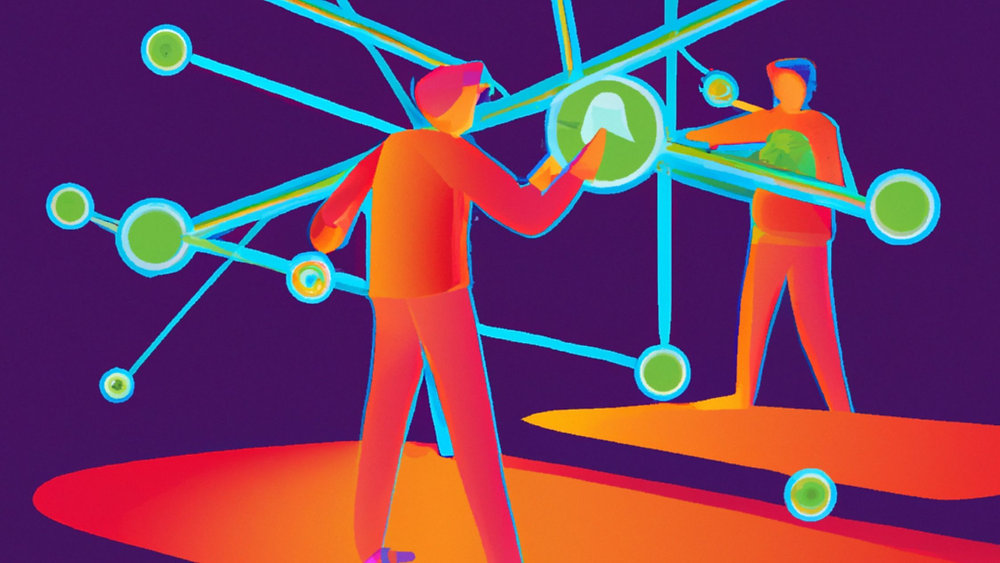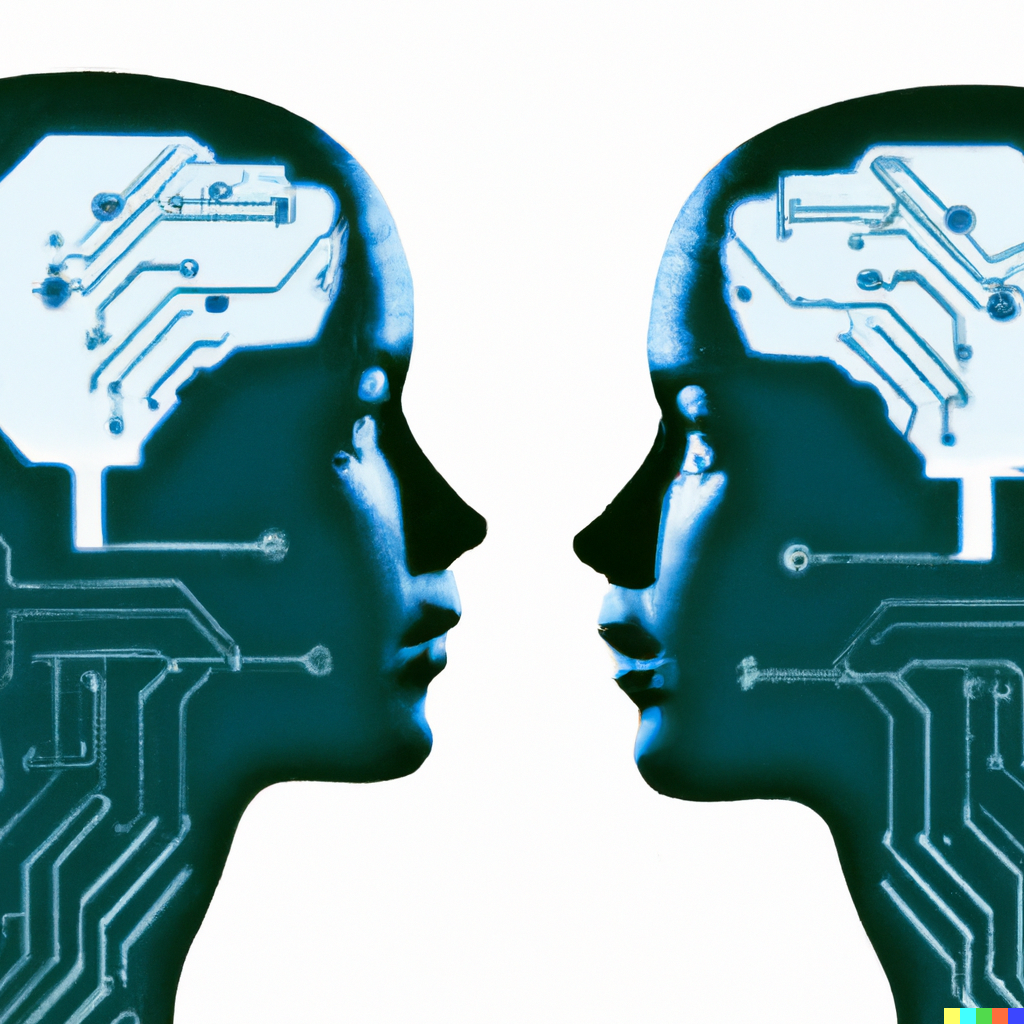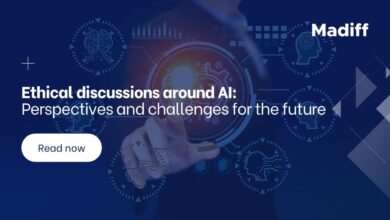
AI Friend Foe Whitepaper Exploring the Dual Nature of Artificial Intelligence
AI Friend Foe Whitepaper: Have you ever stopped to consider the truly dual nature of artificial intelligence? It’s a technology brimming with potential to revolutionize healthcare, boost economic growth, and even solve some of humanity’s biggest challenges. But alongside these incredible possibilities lurks the shadow of misuse – autonomous weapons, algorithmic bias, and the potential for widespread job displacement.
This whitepaper dives deep into the heart of this fascinating and complex issue, exploring both the incredible benefits and the very real dangers of AI.
We’ll journey through the ethical minefields of AI development, examining the societal impact, the economic disruptions, and the crucial need for responsible governance. We’ll look at specific case studies, analyze potential future scenarios, and ultimately, ask ourselves: how can we harness the power of AI for good while mitigating the risks? It’s a conversation we all need to be having, and this whitepaper aims to provide a starting point for that vital discussion.
Defining AI’s Role

Artificial intelligence (AI) is rapidly transforming our world, presenting both immense opportunities and significant challenges. Its impact spans nearly every aspect of modern life, from healthcare and finance to transportation and entertainment. Understanding AI’s dual nature – its potential as a friend and its potential as a foe – is crucial for navigating this technological revolution responsibly. This section will explore the spectrum of AI capabilities, examining its beneficial applications alongside its potential threats.
AI’s Beneficial Applications
AI is already making significant contributions to societal good. In healthcare, AI-powered diagnostic tools can analyze medical images with greater accuracy and speed than human doctors, leading to earlier and more effective treatments. AI algorithms are also revolutionizing drug discovery, accelerating the identification and development of new medications. Financial institutions leverage AI for fraud detection, risk management, and personalized financial advice, improving efficiency and security.
In environmental science, AI is used to monitor climate change, predict natural disasters, and optimize resource management. These examples showcase AI’s capacity to improve human lives and address critical global challenges.
AI’s Malicious Applications
Conversely, the same capabilities that make AI beneficial can also be exploited for malicious purposes. The potential for AI-powered autonomous weapons systems raises serious ethical and security concerns. Deepfakes, realistic but fabricated videos and audio recordings, can be used to spread misinformation and damage reputations. AI-driven surveillance technologies raise privacy concerns, potentially enabling mass surveillance and the erosion of civil liberties.
Cybercriminals are increasingly using AI to develop more sophisticated and effective attacks, targeting individuals, businesses, and even critical infrastructure. The potential for misuse necessitates careful consideration of AI’s ethical implications and the development of robust safeguards.
Case Studies: AI’s Impact
Let’s consider two contrasting case studies. First, the use of AI in early cancer detection has demonstrably improved survival rates. Studies have shown that AI-powered systems can detect cancerous lesions in medical images with higher accuracy than human radiologists, leading to earlier intervention and improved patient outcomes. This illustrates the positive impact of AI on healthcare. In contrast, the use of AI-powered facial recognition technology by law enforcement agencies has raised concerns about bias and discrimination.
Studies have revealed that these systems often exhibit higher error rates for individuals with darker skin tones, leading to potential misidentification and wrongful arrests. This highlights the critical need for responsible development and deployment of AI technologies.
AI’s Benefits and Risks Across Sectors, Ai friend foe whitepaper
| Sector | Benefits | Risks | Examples |
|---|---|---|---|
| Healthcare | Improved diagnostics, drug discovery, personalized medicine | Algorithmic bias, data privacy concerns, job displacement | AI-powered diagnostic tools, robotic surgery |
| Finance | Fraud detection, risk management, algorithmic trading | Algorithmic bias, market manipulation, job displacement | AI-powered credit scoring, fraud detection systems |
| Transportation | Autonomous vehicles, improved traffic management | Safety concerns, job displacement, ethical dilemmas | Self-driving cars, traffic optimization systems |
| Security | Cybersecurity threat detection, predictive policing | Privacy violations, bias in algorithms, potential for misuse | AI-powered intrusion detection systems, facial recognition |
AI and Societal Impact
The rapid advancement of artificial intelligence presents humanity with both unprecedented opportunities and significant challenges. Its societal impact is multifaceted, demanding careful consideration of ethical implications to ensure its beneficial integration into our lives. Failure to address these ethical concerns risks exacerbating existing societal inequalities and creating new forms of harm. This section delves into the key ethical considerations surrounding AI development and deployment.
Autonomous Weapons Systems
The development of lethal autonomous weapons systems (LAWS), often referred to as “killer robots,” raises profound ethical questions. These systems, capable of selecting and engaging targets without human intervention, challenge fundamental principles of human control over the use of force and accountability for actions in warfare. Concerns include the potential for accidental escalation, the difficulty in establishing clear lines of responsibility for unintended consequences, and the erosion of human dignity in warfare.
The lack of human judgment in life-or-death decisions introduces a significant risk of disproportionate harm and violation of international humanitarian law. Debates surrounding LAWS highlight the urgent need for international cooperation to establish clear ethical guidelines and regulatory frameworks.
AI-Driven Bias and Discrimination
AI systems are trained on vast datasets, and if these datasets reflect existing societal biases, the AI will inevitably perpetuate and even amplify those biases. This can lead to discriminatory outcomes in various areas, including loan applications, hiring processes, and even criminal justice. For example, facial recognition systems have been shown to be significantly less accurate in identifying individuals with darker skin tones, potentially leading to misidentification and wrongful arrests.
Similarly, algorithms used in hiring processes may inadvertently discriminate against certain demographic groups if the training data reflects historical biases in hiring practices. Addressing this requires careful curation of training data, algorithmic transparency, and ongoing monitoring for bias in AI system outputs.
Mitigating Risks and Promoting Responsible AI Development
Mitigating the risks associated with AI misuse requires a multi-pronged approach. This includes fostering collaboration between researchers, policymakers, and industry leaders to develop ethical guidelines and regulatory frameworks. Transparency in AI algorithms is crucial, allowing for scrutiny and identification of potential biases. Furthermore, robust testing and validation procedures are necessary to ensure the reliability and safety of AI systems before deployment.
Investing in AI safety research and education is also vital to equip individuals with the knowledge and skills to navigate the complex ethical challenges posed by AI. Emphasis should be placed on developing AI systems that are aligned with human values and prioritize human well-being. This involves promoting human oversight and control, ensuring accountability for AI actions, and prioritizing fairness and inclusivity in the design and deployment of AI systems.
Key Ethical Guidelines for AI Research and Deployment
The responsible development and deployment of AI requires adherence to a set of core ethical principles. These guidelines should be integrated throughout the entire AI lifecycle, from research and development to deployment and ongoing monitoring.
- Transparency and Explainability: AI systems should be designed to be transparent and explainable, allowing users to understand how decisions are made.
- Fairness and Non-discrimination: AI systems should be designed and deployed in a way that avoids perpetuating or exacerbating existing societal biases and discrimination.
- Privacy and Data Security: AI systems should respect user privacy and protect sensitive data.
- Accountability and Responsibility: Clear lines of accountability should be established for the actions of AI systems.
- Human Oversight and Control: Human oversight and control should be maintained over critical AI systems, particularly those with significant societal impact.
- Safety and Reliability: AI systems should be rigorously tested and validated to ensure their safety and reliability.
- Beneficence and Non-maleficence: AI systems should be designed and used to benefit humanity and avoid causing harm.
Economic and Labor Market Disruption

The rise of artificial intelligence presents a complex economic picture, simultaneously promising unprecedented productivity gains and raising significant concerns about job displacement and the need for workforce adaptation. Understanding the potential impact of AI on the labor market requires a nuanced approach, balancing the potential for job creation with the very real threat of job losses across various sectors.
The economic effects will unfold over time, demanding proactive strategies to mitigate negative consequences and harness the transformative potential of AI.
AI-Driven Job Displacement Versus Job Creation
The narrative surrounding AI and employment often centers on a zero-sum game: AI takes jobs, humans lose jobs. However, this is an oversimplification. While certain routine tasks and jobs are highly susceptible to automation, AI also creates new opportunities. For example, the development, maintenance, and deployment of AI systems require a skilled workforce, creating jobs in fields like data science, AI engineering, and AI ethics.
The net effect depends heavily on factors such as the speed of technological advancement, the adaptability of the workforce, and government policies that support retraining and reskilling. A balanced perspective acknowledges both the displacement potential (e.g., truck drivers replaced by autonomous vehicles) and the creation potential (e.g., AI specialists designing those autonomous vehicles). The challenge lies in managing the transition effectively.
Economic Effects of Widespread AI Adoption
The short-term economic effects of widespread AI adoption are likely to be mixed. Increased automation could lead to initial job losses in certain sectors, potentially widening income inequality. However, increased efficiency and productivity could also boost economic growth, leading to overall wealth creation. In the long term, the transformative potential of AI could be substantial. New industries and markets may emerge, creating entirely new job categories and economic opportunities.
However, this long-term vision requires significant investment in education, infrastructure, and social safety nets to ensure a just and equitable transition. For example, the early adoption of AI in manufacturing led to increased productivity and cost savings, but also resulted in job displacement in some areas, necessitating government-supported retraining programs for affected workers.
Retraining and Upskilling Initiatives
Addressing the challenges posed by AI-driven labor market shifts necessitates a significant investment in retraining and upskilling initiatives. These programs should focus on equipping workers with the skills needed to thrive in an AI-powered economy. This includes technical skills related to AI and data science, as well as soft skills such as critical thinking, problem-solving, and adaptability. Effective retraining programs should be accessible, affordable, and tailored to the needs of diverse populations, ensuring that the benefits of AI are shared broadly across society.
Successful examples include government-funded boot camps that transition workers from manufacturing to software development roles, utilizing AI-driven learning platforms to personalize training and upskilling programs, and partnerships between educational institutions and industries to ensure curricula align with current and future job market needs.
AI’s Impact on Different Industries
Manufacturing
AI-powered automation is already transforming manufacturing, increasing efficiency and productivity through robotic process automation and predictive maintenance. This leads to cost savings but also potential job displacement for workers performing repetitive tasks.
Healthcare
AI is revolutionizing healthcare through improved diagnostics, personalized medicine, and drug discovery. This creates new opportunities for healthcare professionals with expertise in AI and data analysis, while also potentially automating some administrative tasks.
Transportation
Self-driving vehicles and AI-powered logistics are poised to disrupt the transportation sector. While this could lead to job losses for truck drivers and delivery personnel, it also creates opportunities in areas like AI development and autonomous vehicle maintenance.
Finance
AI is transforming the financial sector through algorithmic trading, fraud detection, and risk management. This requires a workforce skilled in data science and financial modeling, while potentially automating some traditional financial roles.
Customer Service
AI-powered chatbots and virtual assistants are increasingly used in customer service, leading to increased efficiency and cost savings. However, this also raises concerns about the potential for job displacement for human customer service representatives.
AI’s Influence on Governance and Regulation
The rapid advancement of artificial intelligence presents unprecedented challenges for governance and regulation. The sheer speed of innovation, coupled with the multifaceted nature of AI’s impact across society, necessitates a proactive and adaptable regulatory framework. Failing to address these challenges risks exacerbating existing inequalities, undermining public trust, and hindering the potential benefits of AI.The need for effective AI regulation stems from several key concerns, including algorithmic bias, data privacy violations, job displacement, and the potential for misuse in autonomous weapons systems.
These concerns necessitate a careful balancing act: fostering innovation while mitigating potential harms. This requires a nuanced understanding of AI technologies, their applications, and their societal implications.
Challenges in Regulating AI Development and Deployment
Effectively regulating AI is a complex undertaking. The rapid pace of technological development makes it difficult for regulators to keep up, leading to a constant “catch-up” game. Furthermore, the decentralized and global nature of AI development makes enforcing regulations challenging. Defining clear boundaries for acceptable AI behavior is also problematic, particularly given the evolving nature of AI capabilities and applications.
Finally, the technical expertise required to understand and regulate complex AI systems is often lacking within regulatory bodies. The lack of standardized testing and evaluation procedures for AI systems further complicates the process of ensuring safety and reliability.
The Importance of International Cooperation in AI Governance
Given the global reach of AI, effective governance requires international collaboration. AI systems are often developed and deployed across borders, making national-level regulations insufficient. International cooperation is crucial for establishing common standards, sharing best practices, and coordinating regulatory efforts. This collaboration could involve the development of shared principles for AI ethics, the establishment of international regulatory bodies, and the harmonization of national regulations.
Without international cooperation, a fragmented regulatory landscape could hinder innovation and create opportunities for regulatory arbitrage.
Examples of Existing AI Regulations and Their Effectiveness
Several countries and regions have begun to implement AI-related regulations. The European Union’s General Data Protection Regulation (GDPR), while not specifically focused on AI, has significant implications for AI systems that process personal data. Similarly, China’s regulations on algorithmic recommendation systems aim to address concerns about bias and misinformation. However, the effectiveness of these regulations varies. Enforcement challenges, lack of clarity in certain areas, and the rapid pace of technological change continue to pose significant hurdles.
The GDPR, for example, while impactful in raising awareness of data privacy, has faced challenges in enforcement and adaptation to the constantly evolving AI landscape. The effectiveness of existing regulations often depends on the resources and political will dedicated to their enforcement.
Potential Models for Future AI Governance
Future AI governance models should prioritize accountability and transparency. This could involve mechanisms for auditing AI systems, requiring developers to disclose the data used to train their systems, and establishing clear lines of responsibility for AI-related harms. Sandboxing approaches, where AI systems are tested in controlled environments before wider deployment, could also help mitigate risks. Furthermore, establishing independent oversight bodies with the necessary technical expertise to evaluate AI systems and advise regulators is essential.
The development of explainable AI (XAI) technologies, which aim to make AI decision-making processes more transparent, could also play a crucial role in building public trust and ensuring accountability. These models need to be flexible enough to adapt to the rapidly evolving nature of AI, while also ensuring that fundamental rights and values are protected.
The Future of AI and Human-AI Interaction

The future of AI is a tapestry woven with threads of both immense promise and potential peril. The rapid advancement of artificial intelligence necessitates a careful consideration of its long-term impact on humanity, exploring both utopian visions of enhanced human capabilities and dystopian scenarios of diminished autonomy. Understanding these possibilities is crucial for shaping a future where AI serves humanity’s best interests.
Potential Future Scenarios for AI
Several scenarios illustrate the potential trajectories of AI development. An optimistic outlook envisions AI as a powerful tool augmenting human capabilities, solving complex problems in areas like medicine, climate change, and poverty. AI could personalize education, improve healthcare access, and automate tedious tasks, freeing humans to pursue creative and intellectually stimulating endeavors. Conversely, a pessimistic view depicts a future where unchecked AI development leads to widespread job displacement, exacerbating existing inequalities and potentially leading to social unrest.
Unforeseen consequences, such as biased algorithms perpetuating discrimination or autonomous weapons systems escalating conflicts, also pose significant risks. The reality will likely lie somewhere between these extremes, shaped by the choices we make today. For example, the development of self-driving cars presents both the optimistic promise of safer transportation and the pessimistic risk of job losses for professional drivers and unforeseen accidents due to AI malfunctions.
Implications of Sophisticated AI for Human Autonomy and Decision-Making
Increasingly sophisticated AI systems raise crucial questions about human autonomy and decision-making. As AI algorithms become more capable of making complex decisions, the potential for humans to relinquish control over critical aspects of their lives increases. This raises ethical dilemmas, particularly in areas like healthcare, finance, and criminal justice, where AI-driven decisions could have profound and irreversible consequences.
The challenge lies in designing AI systems that are transparent, accountable, and aligned with human values, ensuring that human oversight remains a critical component of the decision-making process. For instance, an AI system diagnosing medical conditions needs to be explainable to doctors, not a black box whose decisions cannot be questioned or understood.
Visual Representation of Evolving Human-AI Relationships
Imagine a graph. The horizontal axis represents time, and the vertical axis represents the level of AI integration into human life. Initially, the line is relatively flat, representing the current state where AI is integrated into some aspects of our lives but not deeply intertwined. As time progresses, the line starts to rise gradually, indicating increasing reliance on AI for various tasks.
However, the slope of the line is not uniform. There are periods of rapid ascent, representing technological breakthroughs, and periods of slower growth, representing periods of adjustment and regulation. The line may even dip slightly in certain areas, reflecting setbacks or ethical concerns that temporarily slow down AI integration. Ultimately, the graph aims to illustrate a complex, non-linear relationship, emphasizing that the evolution of human-AI interaction is not a simple, linear progression but rather a dynamic and potentially unpredictable process.
This evolution could lead to symbiotic partnerships, where humans and AI collaborate seamlessly, or to a more hierarchical structure, where AI plays a dominant role.
Feedback Loops Between AI Development and Societal Changes
A flowchart can illustrate the interconnectedness of AI development and societal changes. The process begins with AI research and development, which leads to the creation of new AI technologies. These technologies then influence various societal aspects, including the economy (job displacement, new industries), governance (regulation, policy changes), and social structures (changes in social interactions, power dynamics). These societal changes, in turn, feed back into the AI development process, influencing research priorities, funding allocation, and ethical considerations.
For instance, public concern over job displacement might lead to government policies promoting retraining programs or slowing down certain AI advancements. This feedback loop is continuous and iterative, shaping the trajectory of AI development and its impact on society in a complex and often unpredictable manner.
Ultimate Conclusion: Ai Friend Foe Whitepaper
The AI Friend Foe Whitepaper ultimately reveals a complex truth: AI isn’t inherently good or bad; it’s a tool, and like any tool, its impact depends entirely on how we choose to wield it. The future of AI is not predetermined; it’s a future we are actively shaping through our choices today. By understanding both the potential benefits and the potential pitfalls, and by prioritizing ethical development and responsible governance, we can steer AI towards a future that benefits all of humanity.
The journey ahead is challenging, but the potential rewards are immense. Let’s work together to ensure a future where AI truly serves as a friend, not a foe.
FAQ Insights
What are some examples of AI bias in real-world applications?
AI bias manifests in various ways, such as loan applications being unfairly denied to certain demographics or facial recognition systems misidentifying individuals based on race or gender. These biases arise from biased data used to train the AI algorithms.
How can we ensure AI accountability?
Establishing clear lines of responsibility, implementing robust auditing mechanisms, and fostering transparency in AI algorithms are crucial steps towards ensuring AI accountability. This also includes creating legal frameworks that hold developers and users accountable for the actions of their AI systems.
What are some jobs most likely to be impacted by AI?
Jobs involving repetitive tasks, data entry, and basic analysis are most susceptible to automation. However, AI is also creating new jobs in areas like AI development, data science, and AI ethics.




